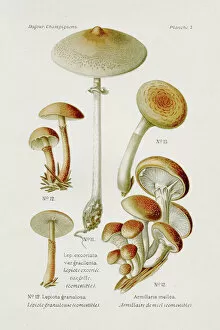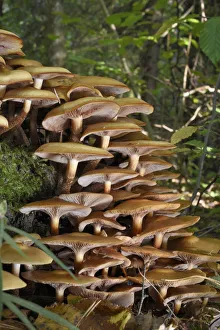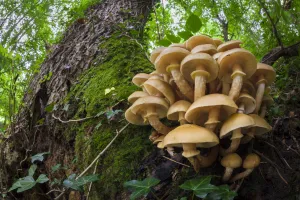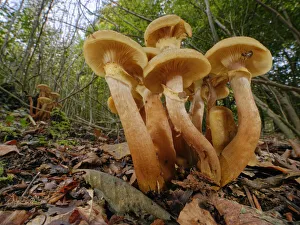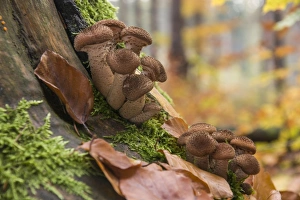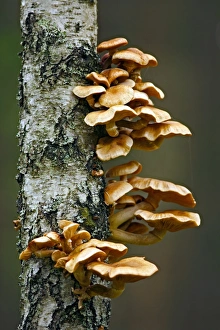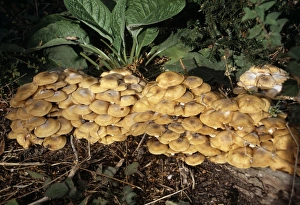Honey Fungus Collection
"Honey Fungus: Nature's Intricate Network of Decay and Renewal" In the enchanting world of woodland ecosystems
All Professionally Made to Order for Quick Shipping
"Honey Fungus: Nature's Intricate Network of Decay and Renewal" In the enchanting world of woodland ecosystems, a fascinating organism known as honey fungus (Armillaria mellea) takes center stage. First discovered in 1891, this mushroom species has captivated scientists and nature enthusiasts alike with its unique characteristics. One can often spot large clumps growing on treestumps in deciduous woodlands, showcasing their resilience and adaptability. Whether it be a mature Ash tree or any other majestic specimen like the Fraxinus excelsior, these mushrooms find solace in nurturing decayed organic matter. Buckholt Wood NNR is one such place where clusters of Armillaria mellea thrive harmoniously amidst the vibrant foliage. With their distinct appearance resembling dark honey-colored caps, they effortlessly blend into their surroundings while leaving an indelible mark on the ecosystem. Known for their bootlace-like rhizomorphs that spread underground, honey fungus exemplifies interconnectedness within nature's intricate web. These networks serve as conduits for nutrient exchange between trees and fungi, fostering symbiotic relationships that sustain life itself. Beyond its scientific significance lies the captivating allure of these mushrooms' aesthetic appeal. The underside of their caps reveals a mesmerizing pattern reminiscent of delicate lacework – a testament to Mother Nature's artistic prowess. While Armillaria ostoyae may also bear resemblance to its cousin Armillaria mellea with its dark hue, Thuringia and Emsland regions in Germany have become prime locations to witness this striking variation firsthand. It serves as a reminder that even within species diversity exists; each manifestation holds its own charm. As we delve deeper into understanding honey fungus, we uncover not only its beauty but also its role as both creator and destroyer. Like yin and yang coexisting harmoniously, these mushrooms contribute to forest regeneration by breaking down decaying matter, while simultaneously posing a threat to weakened trees.

